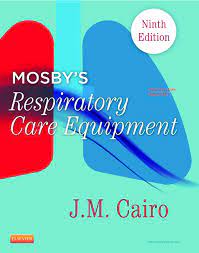Description
United States Health Care System Combining Business Health And Delivery3rd Ed by Anne Austin
Table of Contents
PART ONE: OVERVIEW AND PAYMENT
1. Health and Care in America
2. The Business Side of Health Care
3. The Payment Process: Insurance and Third-Party Payers
4. The Payment Process: Government Payment Programs
PART TWO: EMPLOYMENT IN HEALTH CARE
5. Health Care Providers: Physicians and Nurses
6. Other Clinical and Non-Clinical Health Care Providers
PART THREE: THE DELIVERY SYSTEMS
7. Offices, Clinics, and Hospitals
8. Aging in America
9. Mental Health Services: A Combination of Systems
10. The Public Health System: The Government’s Role
PART FOUR: HEALTH CARE INDUSTRY AND ISSUES
11. Medical Technology, Pharmaceuticals, and Pharmacological Research
12. Health Care Research and Prevention
13. Cultural Competency, Health Literacy, and Health Care Ethics
14. International Health Care
The U.S. Health Care System, 3e (Austin)
Chapter 1 Health and Care in America
1) The medical model includes all of the following, EXCEPT
A) illness and disease require treatment
B) focus is diagnosis
C) focus is on disease prevention
D) focus is on treatment
Answer: C
2) In the two decades following 2010, millions of Americans will reach age 65. This concerns the health care industry because
A) men are living longer and will outpace women; thus, there will be a need for increased services for men
B) of the exodus of experienced health care professionals
C) the generation after the baby boomers will overwhelm the health care system
D) there will be an increased need for geriatric care
Answer: D
3) According to the 2014 National Health Interview Survey, who is more likely to suffer from poor health?
A) A person with a college degree
B) A person who has graduated from high school
C) An individual with a yearly income of $85,000
D) An individual with a yearly income of $20,000
Answer: C
4) The Centers for Disease Control and Prevention do all the following, EXCEPT
A) survey Americans about their health
B) collect health statistics
C) report the leading causes of death
D) monitor hospital compliance with HIPAA
Answer: D
5) Focus areas of Healthy People 2020 and patterns of disease in the population direct research efforts. Research can be directed at all of the following, EXCEPT
A) cure
B) control
C) prevention
D) elimination
Answer: D
6) What was the leading cause of death in 2012?
A) Suicide
B) Diabetes
C) Heart disease
D) Pneumonia/flu
Answer: C
7) All of the following occupations are expected to increase by more than 40% by 2022, EXCEPT
A) sonographers
B) medical secretaries
C) home care aides
D) occupational therapy assistants
Answer: B
8) Health care employment continues to grow for all of the following reasons, EXCEPT
A) managing costs
B) advances in medical technology
C) aging population
D) inability to automate many functions
Answer: D
9) In 2013, the U.S. spent ________ on health expenditures.
A) $2.5 billion
B) $50 billion
C) $2.9 trillion
D) $50 trillion
Answer: C
10) Which statement does NOT describe health care?
A) It accounts for the largest percentage of the gross domestic product.
B) It is one of the fastest growing industries in the United States.
C) It is the process of providing care to individuals to maintain and improve their physical and mental well-being.
D) It is an industry.
Answer: A
11) The study of disease and death in a population is called
A) microbiology
B) epidemiology
C) anthropology
D) sociology
Answer: B
12) Two parameters that usually result in an indication of excellent health are
A) genetics and education
B) genetics and income
C) education and income
D) profession and income
Answer: C
13) All of the following are types of health care facilities, EXCEPT
A) a physician’s office
B) an HMO
C) a long-term-care facility
D) a hospital
Answer: B
14) Which is TRUE regarding long-term care?
A) Only those 65 and older are eligible.
B) The majority of care is provided in nursing homes.
C) In 2012, more than 4 trillion people received services.
D) All age groups are eligible for services.
Answer: D
15) The term LTC means providing health care services to an individual for more than
A) 30 days
B) 60 days
C) 90 days
D) 180 days
Answer: C





Be the first to review “United States Health Care System Combining Business Health And Delivery3rd Ed by Anne Austin Test Bank”